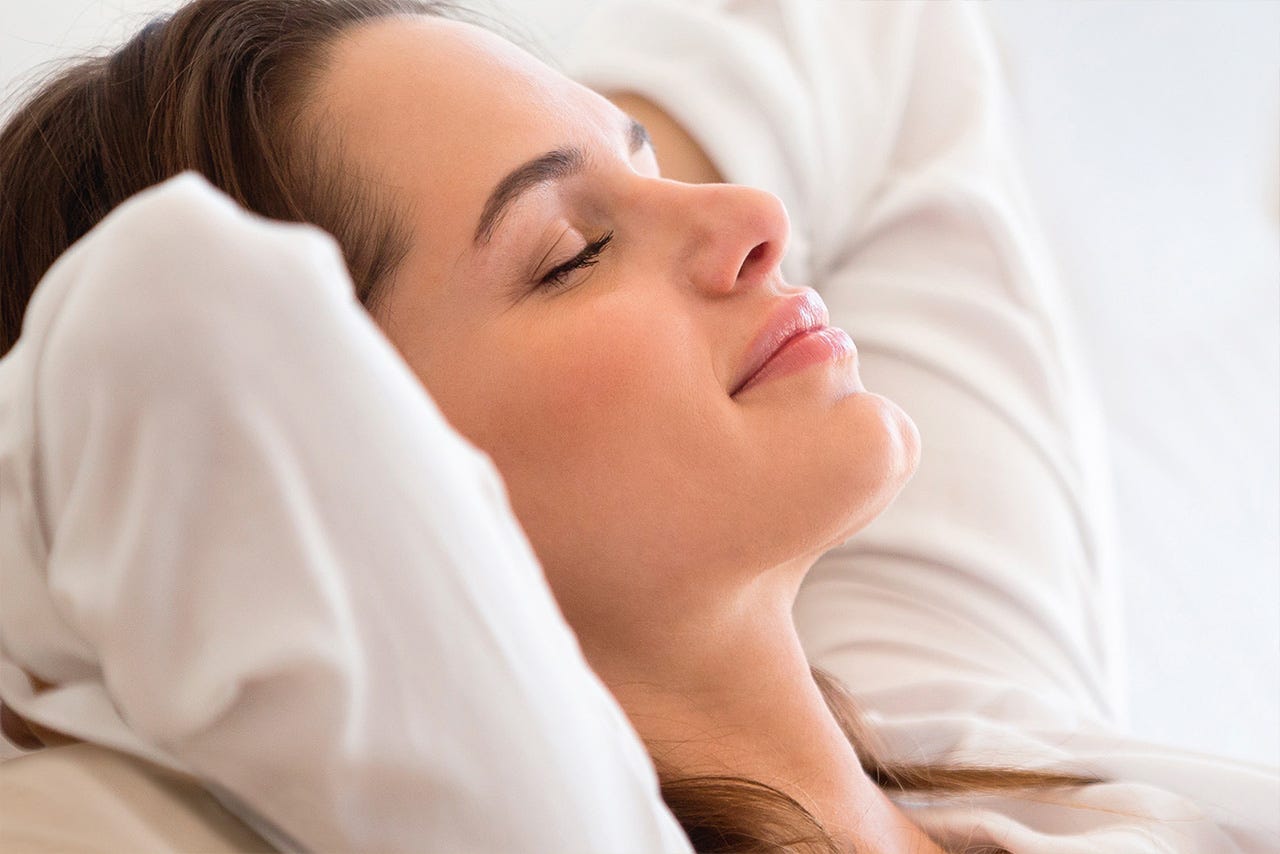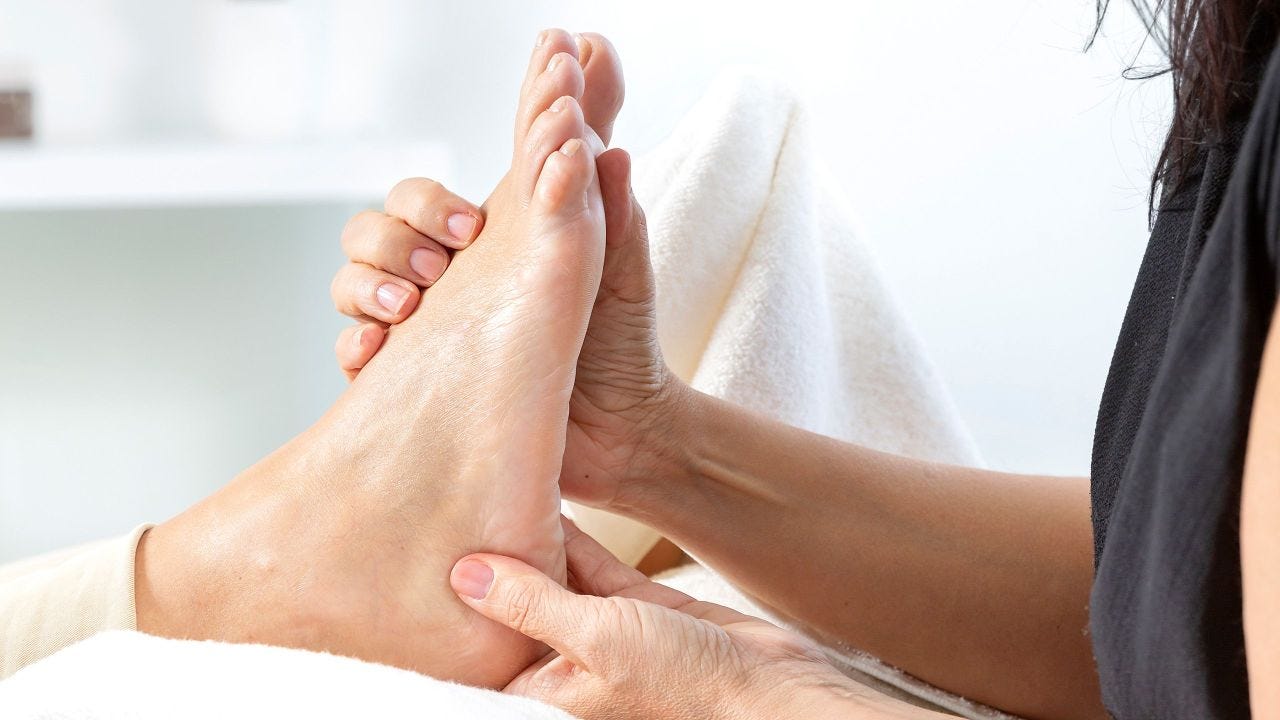🏡📦 Now shipping from our UK warehouse — Fast & Free delivery from £100 😉
Reflexology is based on the massage of reflex points, especially on feet and hands. Discover the benefits of reflexology.
What is reflexology?
Reflexology is a natural technique which aims to regulate stress and its possible effects on health. By a specific kind of touch on certain areas of the body known as reflex zones, the reflexologist can detect tension and promote regulation of it.
The assumption is that these reflex zones are linked to organs and stimulating them harmonises their function, thus creating homeostasis, which is a state of equilibrium of the main physiological functions. These zones are present in the feet, hands, face and ears. Each reflex zone corresponds to an organ, a gland or part of the body. An informed stimulation of these reflex zones makes the body start a process of optimum re-equilibrium of the corresponding parts of the body.
Other natural health techniques are based on the same principle : acupuncture, auriculotherapy…
Where does reflexology come from?
While in the West it is seen as a massage technique, reflexology has been practised in China for 5000 years as traditional medicine.
Traces of reflexology have also been found in ancient Egypt. The tomb of Ankhmahor, doctor and vizier to Pharaoh Teti (2323 to 2291 BC), shows the first signs of the use of reflexology. Various medical scenes are represented on his sarcophagus such as childbirth and also foot and hand reflexology. Inscribed on it in hieroglyphics: « "Do me no harm" the other replies "I will do it so you thank me" ».
The discovery of ancient texts leads us to think that the Incas and Native Americans also used these techniques.
The different types of reflexology
There are several types of reflexology according to the various zones of the body.
- Foot reflexology is by far the most popular. A specific touch can locate tensions and other dysfunctions in the body, and revitalize them. This technique is based on the fact that each part of the human body is represented in a certain area of the foot. The body is divided into longitudinal zones which correspond to 40 bodily organs. Like a hologram, the organs on the left side are represented on the left foot, and likewise for the right side. For example, a part of the heel represents the sciatic nerve and the base of the little toe represents the ear.
- Hand reflexology. It works with similar zones to the feet, but on the hands. The right hand corresponds to the right side of the body and the left hand to the left side. By stimulating these localised reflex points on the palm by massage, the reflexologist can stimulate different organs. The practitioner is not a doctor and is not therefore authorised to establish a diagnosis. Sessions are sometimes taken care of by some health insurance companies.
- Facial and cranial reflexology, also called « Dien Chan », is a technique originating from Vietnam. This more recent method uses various instruments to stimulate the facial and cranial reflex zones.
-
- Auriculotherapy : In the same way, the reflex zones to be worked on are found on the ears. Various stimulation techniques on these zones allow an action which promotes the functions of the body’s auto-regulation.
- Sympathico therapy is a very little-used form of reflexology which consists of stimulating the reflex zones located inside the nasal passages with the help of a stylus.


What are the benefits of reflexology?
Frequently used for calming stress and tension, reflexology is a natural treatment first and foremost.
It is a preventative health measure, for well-being or feeling better and a non-medicated way of managing stress with touch
Reflexology is suitable for everyone, from babies to the elderly, pregnant women and sports enthusiasts and sits alongside as a complement to traditional medical care for sick patients. Reflexology forms part of supportive care for cancer patients.
Reflex touch helps to reduce nervous tension, relax the muscles and improve circulation. It enables true relaxation and a perceptible calmness from the first session onwards.
When practised regularly, Reflexology is an excellent natural technique to keep the body functioning well ; effective for use alongside recovery, it is also recommended to maintain the body’s equilibrium, calming problems linked to anxiety, to fatigue and stress ; and also for sleep, digestion and hormonal system problems…
Reflexologists work in spaces promoting relaxation on a massage table or a relaxation chair that can be considered as relaxation chair for backhaches whether this may be in a doctor’s clinic, medical facility or in clients’ homes.
Who practise reflexology?
Reflexologists are trained in reflexology schools. While the discipline is not recognised in France, the qualification of reflexologist was established in 2015 and is registered in the National Directory of Professional Certifications.
Directories have been set up by various reflexologist groups (Federations, syndicate…) Membership of the French Federation of Reflexologists (FFR) guarantees to the general public that a reflexologist is trained, registered, insured and following a strict charter of ethics.
The FFR brings together schools and training centres which offer training according to criteria of qualities which certify people able to practise in a professional manner at the end of training. The practitioner is not a doctor and is not therefore authorised to establish a diagnosis. Sessions are sometimes taken care of by some health insurance companies.
Our questions to a reflexology professional
We talked to health professional, Elise Manzoni, president of the FFR:
Please introduce yourself in a few words :
I am Elise Manzoni, 33 years old, a reflexologist working since June 2011 in Alpes-de-Haute-Provence. I work with all publics : babies, infants, sportspersons, adults, adolescents, the elderly, people undergoing extensive treatment, disabled people.
Once a week I hold my sessions in the Manosque day hospital for people who are mostly receiving chemotherapy treatment.
Two days a month at the Malijai care home, for residents and staff. The sessions are covered by the organisation itself. I spend the rest of my time between two clinics and in clients' homes.
I've been a member of the FFR (French Federation of Reflexologists) since the start of my career, a member of the Executive Board since 2014, the French representative with Reflexology in Europe Nexus, that is the European Federation, since March 2018, and then President of the FFR since March 2019.
Could you tell us what reflexology is all about ?
Reflexology is one of the natural techniques. A specific touch, called reflex touch applied to the feet, hands or face, helps the body to self-regulate.
What does reflexology cure? What are the benefits of foot reflexology?
The choice of words is very important in our calling, we are not doctors, so we do not cure. However, we can help the body to manage stress and pain, help to recover sleep, encourage good digestion, do preventive work on the immune system... in a word, help the body to achieve homeostasis.
How long have you been doing this ?
Since 2011
Do you have a diploma ? What training did you follow ?
I am certified. I was trained at the RTE college (traditional and evolutive reflexology), at Tourrettes in the Var, which is a college approved by the FFR. I have been continued my training ever since : in Dien Chan (facial reflexology) in 2015 at the REF Training college in Toulouse, with specific modules for supporting fertility and pregnancy in 2014; the latest is orthopaedic reflexology training in May 2019 in Athens.
And I'm not planning to stop there !
What is a reflexology session like?
A session in the clinic or at home lasts about 1 hr. I start with an interview to assess the general state of the person and their reason for coming. Then the person settles in one of your relax chairs, with cushions under the knees for optimum comfort. For foot reflexology, I use cream, oil or talc and then the session starts.
At the end of the session there is time for a chat to check on the tense areas and the work carried out.
Comment se déroule une séance de réflexologie ?
Que ce soit en cabinet ou à domicile j'ai un Relax LAFUMA MOBILIER (un plus léger pour le déplacement et un matelassé pour le cabinet).La séance en cabinet ou à domicile dure 1h environ. Je débute par un entretien pour faire un point sur l'état général de la personne et sur la raison de sa venue. Ensuite la personne s'installe dans un de vos relax, avec des coussins sous les genoux pour un confort optimum. Pour la réflexologie plantaire, j'utilise soit de la crème, soit de l'huile, soit du talc puis la séance peut commencer.
A la fin de la séance il y a un moment d'échange pour faire le point sur les zones de tensions et sur le travail effectué.
What equipment do you use ?
Whether in the clinic or in homes, I have a LAFUMA MOBILIER Relax (a lighter one for travelling and a padded one for the clinic)
Compared with a massage table, what are the advantages of using a LAFUMA MOBILIER Relax armchair ?
I can only see advantages in using a Relax. I offer both in the clinic but the Relax is used in 95% of cases.
It takes the shape of the back and supports without pain. As I work a lot with hyperalgesic people, it's the best solution. The angle of the armchair lets me work with optimal posture.
For homes, its weight and size also suit me. It lets me settle my clients in the same conditions as in the clinic.
Which Relax do you use ?
I have three : two domestic Relax (one green/one blue) and one more comfortable for the clinic : Relax Futura Air Comfort M2 in brown I think !
You are also president of the FFR (French Federation of Reflexologists). Since when ?
Yes, since March 2019.
What are the missions/activities of the FFR ?
The French Federation of Reflexologists is a national professional organisation created in 1998. It brings together Reflexology professionals as well as approved training institutions. In legal terms, it remains the professional organisation most representative of Reflexologists' practice.
Our actions are undertaken to help the public find qualified professionals, and suitable quality training for those who wish to become Reflexologists.
Overall we carefully monitor professionals with site checks; we set up post-graduate training for continuing development and reassessment.
For students : we help them through the training, and facilitate their setting up
For professionals : we act to help their daily lives; we keep them informed of reflexology developments. We provide a working framework for all our members.
We also work with the European Federation : to share knowledge and skills, to reflect on our conditions and development in our respective countries, to make the minimum requirements uniform.
Is the Reflexologist's practice recognised by the medical world ?
Yes, even if not in the most official way, because mostly we work with the medical profession, in organisations like care homes, hospitals, clinics, rehabilitation centres... Various bodies organise debates and meetings on the use of natural and complementary techniques, including reflexology. As well as the means for validating its effectiveness.
The FFR is partly funding a research project which is due for completion : « The contribution of brain fMRI to understanding the mechanism of foot reflexology »

